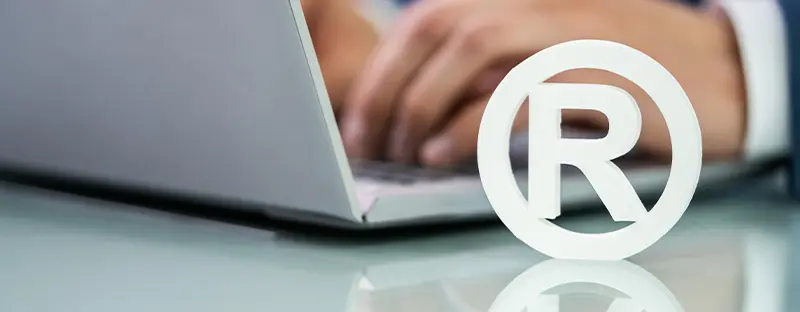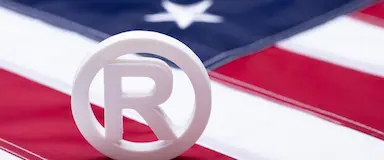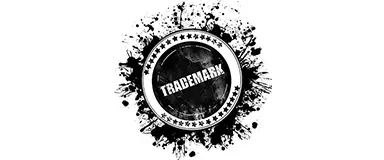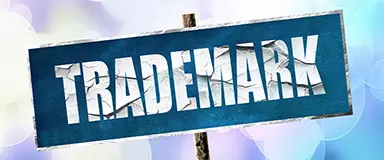Complete step-by-step guide to registering a trademark with the USPTO in 2025. Learn filing requirements, costs ($350 base fee), timelines (12-18 months), and maintenance requirements.
What Makes for Strong Trademark Protection
Written by Adrian Torres ·

When Reed Hastings was brainstorming names for his DVD-by-mail startup, he could have chosen something descriptive like "Fast Movies" or "Home Cinema." Instead, he invented "Netflix." It was a made-up word that combined "net" and "flicks." At first, this was only a catchy name. But it would go on to become one of the world's largest and most recognizable brands.
Meanwhile, other companies struggle to protect brands like "Best Buy," "American Airlines," or "Burger King." These names seem obviously trademarked but actually occupy much weaker positions on the legal spectrum. The actual difference is that Netflix is what lawyers call a "fanciful" trademark, while those other examples are merely "descriptive," requiring years of expensive marketing to achieve any level of protection.
Why does this matter? Well, the strength of your trademark determines how much money you'll spend defending it, how easily competitors can copy it, and whether you'll own a defensible brand or just an expensive suggestion.
The Trademark Strength Hierarchy
Every trademark falls somewhere on a five-level spectrum of distinctiveness. Think of it as a ladder: the higher you climb, the stronger your legal protection becomes. The spectrum includes:
- Generic (no protection possible)
- Descriptive (weak protection, requires secondary meaning)
- Suggestive (moderate protection, inherently registrable)
- Arbitrary (strong protection, inherently registrable)
- Fanciful (strongest protection, inherently registrable)
You might have noticed one of the paradoxes of trademark law. The more obviously your trademark describes your business, the weaker it becomes legally. It's like trademark strength works in reverse from marketing logic.
Generic Marks: The Legal No-Man's Land
Generic terms can never be trademarks, period. You can't trademark "Computer" for computers, "Restaurant" for restaurants, or "Bike" for bicycles. Everyone in that industry needs to use those words to describe what they sell.
But there's a catch. Even some protected "trademarks" have actually become generic, losing all protection in the process. "Trampoline" was once a protected trademark, until everyone started using it to describe the bouncing equipment. Same goes with "Escalator," "Cellophane," "Aspirin" (in the U.S.), and "Corn Flakes."
This process, called "genericide," is why you see companies desperately fighting to keep their trademarks from becoming common words. Xerox spends millions reminding people to "make copies with a Xerox machine," not to "xerox" documents. Kleenex insists you ask for "Kleenex brand facial tissue," not just "kleenex." Google, despite its massive success, faces the constant threat of "google" becoming a generic verb for internet browsing.
Descriptive Marks: Weak but Common
Descriptive trademarks directly describe your product or service. They're incredibly common because they seem like obvious business choices. And that's a part of the problem.
"Cold and Creamy" for ice cream, "Fast Delivery" for courier services, or "Tasty Burgers" for a restaurant all fall into this category. They immediately tell customers what you offer, but they're nearly impossible to enforce against competitors without years of expensive marketing to build what's called "secondary meaning."
Secondary meaning is the legal term for when consumers start associating a descriptive term with a specific company rather than just the general product category. It's expensive to achieve and even more expensive to prove in court.
Consider these descriptive marks that eventually gained protection through massive marketing investments:
- Sharp for televisions (requires consumers to think "brand" not "blade-like")
- Holiday Inn for hotels (beyond just describing vacation lodging)
- Windows for software (rather than just describing the interface)
Each of these companies spent millions on advertising and years in legal battles to transform weak descriptive terms into protected trademarks. Most small businesses can't afford this route.
Suggestive Marks: The Sweet Spot for Most Businesses
Suggestive trademarks hint at your product or service without directly describing it. They require consumers to connect the mark with what you're selling. This makes them inherently registrable while still providing marketing value.
Successful suggestive marks include:
- Coppertone for suntan products (suggests the bronzed skin result)
- Greyhound for bus transportation (suggests speed and efficiency)
- Tide for laundry detergent (suggests the cleaning action)
- Netflix for streaming services (suggests internet-delivered entertainment)
- Airbus for aircraft manufacturing (suggests flying buses)
The key question to answer here is whether your mark requires thought or imagination to understand its connection to your product. If consumers need even a small mental leap to connect the name with what you sell, you're likely in suggestive territory.
Suggestive marks offer meaningful marketing appeal combined with solid legal protection. They're usually registrable without requiring secondary meaning, but they still face more challenges than arbitrary or fanciful marks.
Arbitrary Marks: Familiar Words, Unexpected Uses
Arbitrary trademarks use real dictionary words in completely unrelated contexts. The words might be familiar, but their connection to the business is unexpected, making them legally strong while still being memorable.
Classic arbitrary marks:
- Apple for computers (nothing to do with fruit)
- Amazon for online retail (no connection to the rainforest)
- Dove for personal care products (unrelated to birds)
- Camel for cigarettes (no actual camels involved)
- Shell for petroleum (beyond just describing containers)
Arbitrary marks are protected precisely because there's no logical reason competitors would ever need to use these specific words for their products. If someone else started selling computers under the "Apple" brand, there's no legitimate argument that they need that word to describe their technology.
While the advantage of arbitrary marks comes from their relative uniqueness and ease of protection, there's a downside. These trademarks require a lot of marketing and a customer awareness campaign to align the name with the product.
Fanciful Marks: The Trademark Gold Standard
Fanciful marks are invented words created specifically to be trademarks. They have no prior meaning, making them the strongest possible trademark category. When you create a fanciful mark, you literally own that word in commerce.
Powerhouse fanciful marks:
- Kodak for photography equipment
- Xerox for photocopying machines
- Google for search engines
- Rolex for timepieces
- Exxon for petroleum products
- Polaroid for instant cameras
Fanciful marks offer the most protection and have minimum legal challenges. Since these words didn't exist before the companies created them, there are no competing claims or definitional arguments. Courts almost always side with fanciful mark owners in infringement disputes.
The trade-off is that fanciful marks require substantial marketing investment to build meaning in consumers' minds. "Kodak" meant nothing until the company spent decades teaching people it represented quality photography.
The Business Strategy Behind Trademark Strength
Startups should consider starting with suggestive or arbitrary marks. They offer good trademark protection without requiring the massive marketing budgets that fanciful marks demand. A suggestive mark like "Stripe" for payment processing gives you both legal strength and intuitive marketing appeal.
Established companies that are already using descriptive marks should determine whether the marketing value justifies the weak legal position. Sometimes it's better to rebrand with a stronger mark before competitors crowd your space.
Arbitrary and fanciful marks translate more easily across cultures and languages. Descriptive marks often lose their intended meaning or gain unintended connotations when translated, as their direct equivalents may not exist.


